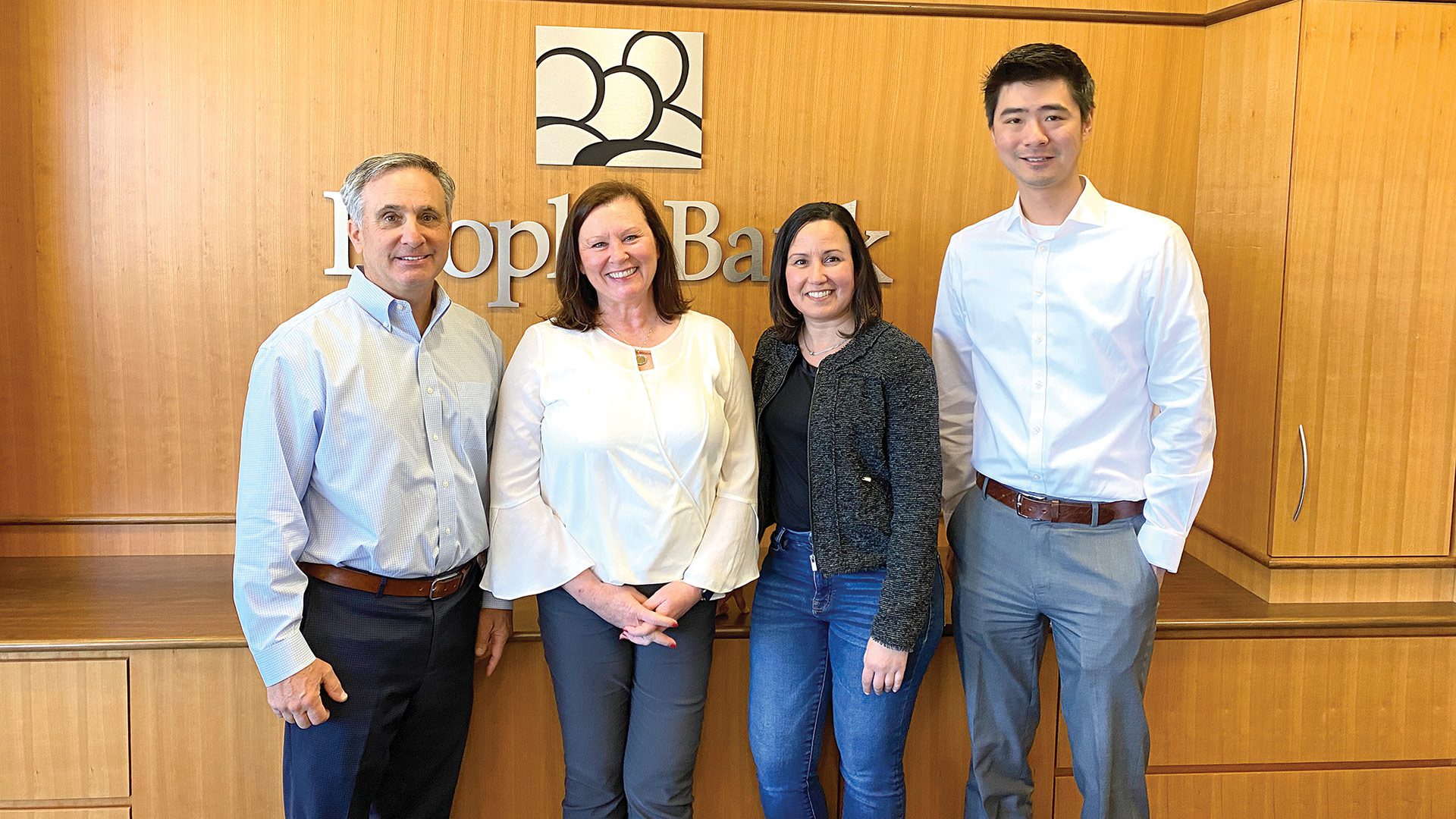The following real estate transactions (latest available) were compiled by Banker & Tradesman and are published as they were received. Only transactions exceeding $115,000 are listed. Buyer and seller fields contain only the first name listed on the deed.
FRANKLIN COUNTY
BUCKLAND
76 Ashfield Road
Buckland, MA 01370
Amount: $235,000
Buyer: Rheanna Bauer
Seller: Deleo, Louis J., (Estate)
Date: 04/01/24
10 Maple St.
Buckland, MA 01341
Amount: $565,000
Buyer: James A. Most
Seller: Seth D. Wilschutz
Date: 04/11/24
COLRAIN
4 Avery Hill Road
Colrain, MA 01340
Amount: $240,000
Buyer: Kristofer J. Billiel
Seller: Lisa J. Genetelli
Date: 04/01/24
25 Phillips Hill Road
Colrain, MA 01340
Amount: $453,000
Buyer: John C. Sherman
Seller: Walter H. Keintzel
Date: 04/02/24
GREENFIELD
1 Coombs Ave.
Greenfield, MA 01301
Amount: $204,959
Buyer: Fidelity & Guarantee Mortgage TR
Seller: Venture Residential LLC
Date: 04/01/24
28 Davenport Way
Greenfield, MA 01301
Amount: $627,500
Buyer: Servicenet Inc.
Seller: Xianmei Li
Date: 04/12/24
4 Michelman Ave.
Greenfield, MA 01301
Amount: $300,000
Buyer: Brittany Billmeyer-Finn
Seller: Douglas Simon
Date: 04/11/24
3 Prospect Ave.
Greenfield, MA 01301
Amount: $123,488
Buyer: Brian K. Hall
Seller: Lakeview Loan Servicing LLC
Date: 04/01/24
52 Riddell St.
Greenfield, MA 01301
Amount: $300,000
Buyer: Marjorie Altidor
Seller: Adil A. Behadilialboade
Date: 04/02/24
10 Southern Ave.
Greenfield, MA 01301
Amount: $280,000
Buyer: Jessica L. Flaxington
Seller: Techntech LLC
Date: 04/08/24
MONTAGUE
58 Central St.
Montague, MA 01349
Amount: $370,000
Buyer: Danica M. Davis
Seller: Sumwin Corp.
Date: 04/05/24
29 Country Club Lane
Montague, MA 01376
Amount: $249,000
Buyer: TM Realty II LLC
Seller: Warren D. Thomas
Date: 04/01/24
30 Country Club Lane
Montague, MA 01376
Amount: $249,000
Buyer: Tm Realty II LLC
Seller: Warren D. Thomas
Date: 04/01/24
Dry Hill Road
Montague, MA 01351
Amount: $249,000
Buyer: TM Realty II LLC
Seller: Warren D. Thomas
Date: 04/01/24
Fairway Ave.
Montague, MA 01351
Amount: $249,000
Buyer: TM Realty II LLC
Seller: Warren D. Thomas
Date: 04/01/24
1 Fairway Ave.
Montague, MA 01376
Amount: $249,000
Buyer: TM Realty II LLC
Seller: Thomas FT
Date: 04/01/24
96 High St.
Montague, MA 01376
Amount: $338,000
Buyer: Jonathan Lord
Seller: Joseph P. Kosewicz
Date: 04/12/24
43 J St., Lot 3
Montague, MA 01351
Amount: $165,000
Buyer: James E. Koyama
Seller: Marcel James Viens TR
Date: 04/12/24
7 Keith St.
Montague, MA 01376
Amount: $240,000
Buyer: Jesse Zabko
Seller: Peter J. Zabko
Date: 04/10/24
163 Montague City Road
Montague, MA 01301
Amount: $249,000
Buyer: TM Realty II LLC
Seller: Warren D. Thomas
Date: 04/01/24
133 Ripley Road
Montague, MA 01351
Amount: $430,000
Buyer: Kevin J. Ovitt
Seller: Geoffrey R. McDonald
Date: 04/08/24
52 Walnut St.
Montague, MA 01376
Amount: $249,000
Buyer: TM Realty II LLC
Seller: Warren D. Thomas
Date: 04/01/24
ORANGE
8 Fieldstone Dr.
Orange, MA 01364
Amount: $291,500
Buyer: Jahmall M. Jones
Seller: Tarrah C. Hart
Date: 04/05/24
29 Pleasant St.
Orange, MA 01364
Amount: $200,000
Buyer: William J. Saben
Seller: Ralph O. Blair
Date: 04/03/24
524 South Main St.
Orange, MA 01364
Amount: $262,000
Buyer: Claude Niyonzima
Seller: RCF 2 Acquisition TR
Date: 04/10/24
20 Victor Ave.
Orange, MA 01364
Amount: $265,000
Buyer: Todd J. Bernard
Seller: Ryan T. King
Date: 04/08/24
SUNDERLAND
153 Amherst Road
Sunderland, MA 01375
Amount: $439,000
Buyer: DNB Properties LLC
Seller: Sunderland Rentals LLC
Date: 04/11/24
118 North Main St.
Sunderland, MA 01375
Amount: $485,000
Buyer: DNB Properties LLC
Seller: Sunderland Rentals LLC
Date: 04/11/24
WARWICK
600 Orange Road
Warwick, MA 01378
Amount: $290,000
Buyer: Kathryn Woods
Seller: Alana L. Mankowsky
Date: 04/05/24
HAMPDEN COUNTY
AGAWAM
115 Anthony St.
Agawam, MA 01001
Amount: $249,500
Buyer: Kmak LLC
Seller: Alicia C. St. Laurent
Date: 04/09/24
738 Barry St.
Agawam, MA 01030
Amount: $310,000
Buyer: Jamison C. Gottier
Seller: Lindsey, Patricia A., (Estate)
Date: 04/11/24
36 Central St.
Agawam, MA 01001
Amount: $160,000
Buyer: Nres LLC
Seller: Perillo, Margaret E., (Estate)
Date: 04/04/24
28 Florida Dr.
Agawam, MA 01001
Amount: $185,000
Buyer: Sareen Properties LLC
Seller: Marion Montagna IRT
Date: 04/11/24
118 Forest Hill Road
Agawam, MA 01030
Amount: $330,000
Buyer: Edward C. Anderson
Seller: Alan Rogers
Date: 04/05/24
108 Franklin St.
Agawam, MA 01030
Amount: $280,000
Buyer: John E. Cassidy
Seller: Hassan Saleh
Date: 04/02/24
18 Katy Lane
Agawam, MA 01001
Amount: $492,500
Buyer: Carlos Mukanu
Seller: Douglas Dichard
Date: 04/12/24
148 North West St.
Agawam, MA 01030
Amount: $162,500
Buyer: Silverbrook Environmental LLC
Seller: Thomas Gallagher
Date: 04/01/24
239 South St.
Agawam, MA 01001
Amount: $350,000
Buyer: Rosa C. Saravia
Seller: Our Town Home Buyers LLC
Date: 04/02/24
36 Taft St.
Agawam, MA 01030
Amount: $260,000
Buyer: Daniel Sanchez
Seller: F. H. B. Realty LLP
Date: 04/12/24
BRIMFIELD
4 Hall Place
Brimfield, MA 01010
Amount: $232,500
Buyer: Christopher Beesley
Seller: Christina Cassell
Date: 04/08/24
CHICOPEE
14 Blanchwood Ave.
Chicopee, MA 01013
Amount: $341,000
Buyer: Alison Lonczak
Seller: Cac Marketing LLC
Date: 04/08/24
713 Britton St.
Chicopee, MA 01020
Amount: $137,310
Buyer: Soundview Hm Loa T. 2006-O
Seller: Mary Nadeau
Date: 04/11/24
1154 Burnett Road
Chicopee, MA 01020
Amount: $290,000
Buyer: Hannah L. Enscoe
Seller: Scott, Susan S., (Estate)
Date: 04/02/24
322 Dale St.
Chicopee, MA 01020
Amount: $405,000
Buyer: Vasyl Levchyk
Seller: Daniel Burgos
Date: 04/11/24
28 Glenwood St.
Chicopee, MA 01013
Amount: $180,000
Buyer: Miguel F. Ribeiro
Seller: Beverly A. Los
Date: 04/02/24
2 Lucretia Ave.
Chicopee, MA 01013
Amount: $275,000
Buyer: Miguel A. Colon-Lopez
Seller: Kevin A. Joly
Date: 04/05/24
60 Murphy Lane
Chicopee, MA 01020
Amount: $201,500
Buyer: Aldo Properties LLC
Seller: Darlene Stewart-Hernandez
Date: 04/05/24
243 Murphy Lane
Chicopee, MA 01020
Amount: $240,000
Buyer: Robert E. McQueen
Seller: Roger L. Kubik IRT
Date: 04/11/24
20 Pendleton Ave.
Chicopee, MA 01020
Amount: $325,000
Buyer: Junior Ndikidjang
Seller: Resolute RT
Date: 04/05/24
31 Rose St.
Chicopee, MA 01020
Amount: $465,000
Buyer: Jonah Holdings LLC
Seller: Home LLC
Date: 04/04/24
47 Royal St.
Chicopee, MA 01020
Amount: $372,500
Buyer: Angel G. Martinez
Seller: Yanjun Yang
Date: 04/03/24
24 Summer St.
Chicopee, MA 01020
Amount: $309,999
Buyer: Arnaldo Graceski
Seller: Bergeron, Jane C., (Estate)
Date: 04/11/24
EAST LONGMEADOW
42 Favorite Lane
East Longmeadow, MA 01028
Amount: $260,000
Buyer: Peter & Elizabeth RET
Seller: Panter NT
Date: 04/12/24
Parker St.
East Longmeadow, MA 01028
Amount: $175,000
Buyer: Panini Properties Ma LLC
Seller: East Longmeadow Group Investors LLC
Date: 04/12/24
45 Young Ave.
East Longmeadow, MA 01028
Amount: $255,000
Buyer: Brianna Jackson
Seller: Keith R. Bazinet
Date: 04/01/24
GRANVILLE
904 Main Road
Granville, MA 01034
Amount: $547,500
Buyer: Tanya M. Laveck
Seller: Susanne M. Chase
Date: 04/05/24
1421 Main Road
Granville, MA 01034
Amount: $390,000
Buyer: Nathan Jensen
Seller: Dean Drzewiecki
Date: 04/08/24
HAMPDEN
Wilbraham Road
Hampden, MA 01036
Amount: $385,000
Buyer: Keith Nicoli
Seller: Evan Boyle
Date: 04/10/24
174 Wilbraham Road
Hampden, MA 01036
Amount: $320,000
Buyer: Paul Yasi
Seller: Irene F. Graves
Date: 04/10/24
HOLLAND
20 May Brook Road
Holland, MA 01521
Amount: $449,000
Buyer: Raffi Keshishian
Seller: Dennis Sneade
Date: 04/12/24
529 Old County Road
Holland, MA 01521
Amount: $555,000
Buyer: Jill M. Papandrea
Seller: Cormier & Sons Construction
Date: 04/10/24
HOLYOKE
203-205 Allyn St.
Holyoke, MA 01040
Amount: $385,000
Buyer: Lobsang Dolma
Seller: Jonathan D. Aronstein
Date: 04/05/24
4 Center St.
Holyoke, MA 01040
Amount: $187,500
Buyer: Lia Douillet
Seller: Kenneth Raskauskas
Date: 04/04/24
19 Charles St.
Holyoke, MA 01040
Amount: $309,900
Buyer: Janice Garcia
Seller: Modern Creative Contractors
Date: 04/08/24
360 Chestnut St.
Holyoke, MA 01040
Amount: $290,000
Buyer: Antonia Santos
Seller: Greater Springfield Habitat
Date: 04/09/24
903 Dwight St.
Holyoke, MA 01040
Amount: $212,639
Buyer: PNC Bank
Seller: David A. Caputo
Date: 04/08/24
48-50 Florence Ave.
Holyoke, MA 01040
Amount: $330,000
Buyer: Timothy J. Beaudry
Seller: Lori L. Beaudry RET
Date: 04/03/24
11 Grant St.
Holyoke, MA 01040
Amount: $275,000
Buyer: Nathan Nuttall
Seller: Carl Hartig
Date: 04/12/24
66 Homestead Ave.
Holyoke, MA 01040
Amount: $250,000
Buyer: Christian F. Figueroa
Seller: Larry T. Camus
Date: 04/05/24
6 Keefe Ave.
Holyoke, MA 01040
Amount: $258,000
Buyer: Peter Lustenberger
Seller: Carolyn E. Lustenberger
Date: 04/01/24
78-82 Newton St.
Holyoke, MA 01040
Amount: $230,000
Buyer: Principia Holdings LLC
Seller: Alecto RT
Date: 04/05/24
58 Waldo St.
Holyoke, MA 01040
Amount: $336,000
Buyer: Venetia M. Guerrasio
Seller: Jonathan Mills
Date: 04/11/24
LONGMEADOW
67 Birchwood Ave.
Longmeadow, MA 01106
Amount: $215,000
Buyer: Timothy Mulcahy
Seller: Kenneth R. Henrikson
Date: 04/03/24
50 Oak Road
Longmeadow, MA 01106
Amount: $375,000
Buyer: Daniel G. Capretta
Seller: Quercus Properties LLC
Date: 04/08/24
21 Salem Road
Longmeadow, MA 01106
Amount: $678,000
Buyer: Ivan Soares
Seller: Robert W. Sullivan
Date: 04/08/24
51 Wellesley Dr.
Longmeadow, MA 01106
Amount: $520,000
Buyer: Mohamed A. Aliyar
Seller: Tran T. Le
Date: 04/05/24
LUDLOW
Balsam Hill Road, Lot 71
Ludlow, MA 01056
Amount: $177,150
Buyer: Robert C. Lattanzi
Seller: Whitetail Wreks LLC
Date: 04/04/24
22 Bristol St.
Ludlow, MA 01056
Amount: $320,000
Buyer: Samuel Cobb
Seller: Antonio Afonso
Date: 04/11/24
306 Chapin St.
Ludlow, MA 01056
Amount: $360,000
Buyer: Kayla Bolduc
Seller: Vincent Fuda
Date: 04/12/24
Equinox Pass Lot 89
Ludlow, MA 01056
Amount: $177,400
Buyer: Richard Young
Seller: Whitetail Wreks LLC
Date: 04/12/24
238 Holyoke St.
Ludlow, MA 01056
Amount: $369,900
Buyer: Alexander Pena
Seller: Jonathan P. Kielbania
Date: 04/12/24
162 James St.
Ludlow, MA 01056
Amount: $310,000
Buyer: Jeffrey Jansson
Seller: Waiwai RT
Date: 04/09/24
64 Kirkland Ave.
Ludlow, MA 01056
Amount: $335,000
Buyer: Brandy E. Alexander-Zuber
Seller: Edward J. Rondeau
Date: 04/01/24
61 Lawton St.
Ludlow, MA 01056
Amount: $299,000
Buyer: Gilbert Palatino
Seller: Brian P. Andraca
Date: 04/08/24
52 Skyridge St.
Ludlow, MA 01056
Amount: $255,000
Buyer: Alexandria L. Florence
Seller: Sarah M. Pascale
Date: 04/05/24
53 Stevens St.
Ludlow, MA 01056
Amount: $322,500
Buyer: Zecarlos Roxo
Seller: Carol J. Jorge
Date: 04/04/24
123 Westerly Circle
Ludlow, MA 01056
Amount: $650,000
Buyer: Erwin A. Enderle
Seller: Dino J. Dangelo
Date: 04/05/24
75 White St.
Ludlow, MA 01056
Amount: $309,900
Buyer: Jonathan Kielbania
Seller: MJ Real Estate LLC
Date: 04/12/24
MONSON
246 Bumstead Road
Monson, MA 01057
Amount: $340,000
Buyer: Robert E. Flynn
Seller: Joyce A. Pikul
Date: 04/11/24
66 Margaret St.
Monson, MA 01057
Amount: $370,000
Buyer: Matthew R. Lillibridge
Seller: Carol A. Snyder
Date: 04/05/24
32 Stebbins Road
Monson, MA 01057
Amount: $385,000
Buyer: Lauren Czarniecki
Seller: Sarah Beauchemin
Date: 04/04/24
4 Stewart Ave.
Monson, MA 01057
Amount: $291,252
Buyer: RMF Buyout Acquisition TR
Seller: Norma M. Germain
Date: 04/08/24
PALMER
55 Buckland St.
Palmer, MA 01069
Amount: $329,500
Buyer: Nicholas McAlley
Seller: Laura M. Brown
Date: 04/05/24
4113-4115 Church St.
Palmer, MA 01069
Amount: $280,000
Buyer: Evan Crossman
Seller: Jonathan A. Marcinkiewicz
Date: 04/10/24
4293-4295 High St.
Palmer, MA 01069
Amount: $180,000
Buyer: Joejoe Properties LLC
Seller: J. & M. Premier Properties LLC
Date: 04/04/24
57 Springfield St.
Palmer, MA 01080
Amount: $185,000
Buyer: Luis A. Ayala
Seller: Elizabeth Tellier
Date: 04/12/24
34 Ware St.
Palmer, MA 01069
Amount: $225,000
Buyer: Joshua T. Smith
Seller: Edward R. St. Amand TR
Date: 04/10/24
SPRINGFIELD
81 Adams St.
Springfield, MA 01105
Amount: $197,500
Buyer: Veteran Stan LLC
Seller: Janis A. Grimaldi
Date: 04/03/24
33 Ambrose St.
Springfield, MA 01109
Amount: $135,000
Buyer: Virgilio Santos
Seller: David Martin
Date: 04/01/24
132 Ambrose St.
Springfield, MA 01109
Amount: $150,000
Buyer: William Raleigh
Seller: Richard A. Beyer
Date: 04/09/24
56 Audley Road
Springfield, MA 01118
Amount: $255,000
Buyer: Hedge Hog Industries Corp.
Seller: Martel, John Peter, (Estate)
Date: 04/10/24
43 Belmont Ave.
Springfield, MA 01108
Amount: $2,090,000
Buyer: S. & G. Realty LLC
Seller: Nolava LLC
Date: 04/05/24
49 Belmont Ave.
Springfield, MA 01108
Amount: $2,090,000
Buyer: S. & G. Realty LLC
Seller: Nolava LLC
Date: 04/05/24
10 Belvidere St.
Springfield, MA 01108
Amount: $115,000
Buyer: Little Eagle LLC
Seller: Christopher Johnson
Date: 04/03/24
788 Berkshire Ave.
Springfield, MA 01101
Amount: $425,000
Buyer: CRG Properties LLC
Seller: Beverly A. Gay TR
Date: 04/10/24
1112 Boston Road
Springfield, MA 01119
Amount: $134,550
Buyer: Pinecrest Holdings LLC
Seller: 1090 Boston Road Inc.
Date: 04/10/24
85 Bowles Park
Springfield, MA 01104
Amount: $255,000
Buyer: Carina Marrero
Seller: Lsf8 Master Part TR
Date: 04/08/24
121 Brandon Ave.
Springfield, MA 01119
Amount: $320,000
Buyer: Lamikco T. Magee
Seller: Thomas Ricks
Date: 04/08/24
365 Cadwell Dr.
Springfield, MA 01104
Amount: $3,100,000
Buyer: 6S T Springfield Mass. LLC
Seller: Cal Rolling Hills LLC
Date: 04/10/24
147 Cedar St.
Springfield, MA 01105
Amount: $200,000
Buyer: DD&K Properties LLC
Seller: Carlos Dones
Date: 04/04/24
414 Central St.
Springfield, MA 01105
Amount: $190,000
Buyer: Migdalia Leon
Seller: C&C Homes LLC
Date: 04/02/24
564 Chestnut St.
Springfield, MA 01107
Amount: $327,000
Buyer: Lucimar Ribeiro
Seller: Luis A. Villanueva
Date: 04/09/24
86-88 Chestnut St.
Springfield, MA 01151
Amount: $356,000
Buyer: Mark E. Bido
Seller: Revampit LLC
Date: 04/10/24
66 Clydesdale Lane
Springfield, MA 01129
Amount: $300,000
Buyer: Frank J. Gleason
Seller: Paul R. Gramarossa
Date: 04/10/24
70 Coleman St.
Springfield, MA 01109
Amount: $260,000
Buyer: Marisa Rivera
Seller: Phantom Holdings LLC
Date: 04/12/24
226-228 College St.
Springfield, MA 01109
Amount: $130,000
Buyer: DB Investments & Properties LLC
Seller: Etabav RT
Date: 04/08/24
64 Colonial Ave.
Springfield, MA 01109
Amount: $270,000
Buyer: Juan L. Vazquez-Mercado
Seller: Hedge Hog Industries Corp.
Date: 04/10/24
791 Cottage St.
Springfield, MA 01104
Amount: $425,000
Buyer: CRG Properties LLC
Seller: Beverly A. Gay TR
Date: 04/10/24
137 Croyden Ter.
Springfield, MA 01104
Amount: $260,850
Buyer: Brooke Eddy
Seller: Joy E. Levine
Date: 04/11/24
82 Crystal Brook Dr.
Springfield, MA 01118
Amount: $575,000
Buyer: Hirving Henriquez
Seller: Grahams Construction Inc.
Date: 04/04/24
189 Dickinson St.
Springfield, MA 01108
Amount: $401,000
Buyer: Moises A. Bonilla
Seller: Jefferson Barros
Date: 04/12/24
80 Embassy Road
Springfield, MA 01119
Amount: $282,000
Buyer: Elizabeth Langat
Seller: Monaghan, Marilyn Ruth, (Estate)
Date: 04/12/24
53-55 Fernwold St.
Springfield, MA 01104
Amount: $245,000
Buyer: Jose N. Arenas-Caceres
Seller: Corey A. Diaz
Date: 04/12/24
28 Florence St.
Springfield, MA 01105
Amount: $320,000
Buyer: Petrika Jankulla
Seller: Earl Andrews
Date: 04/03/24
68 Forest Park Ave.
Springfield, MA 01108
Amount: $341,000
Buyer: Augustin H. Hernandez
Seller: AK & M Properties & Estates LLC
Date: 04/12/24
132 Gresham St.
Springfield, MA 01119
Amount: $235,000
Buyer: Plata O. Plomo Inc.
Seller: 716 Spring Valley LLC
Date: 04/05/24
136 Gresham St.
Springfield, MA 01119
Amount: $235,000
Buyer: Plata O. Plomo Inc.
Seller: 716 Spring Valley LLC
Date: 04/05/24
97 Groveland St.
Springfield, MA 01108
Amount: $135,000
Buyer: James W. Fiore
Seller: Linda Zolendziewski
Date: 04/09/24
61 Harmon Ave.
Springfield, MA 01118
Amount: $280,000
Buyer: Imayrin Padua
Seller: Henry D. Champagne
Date: 04/04/24
162 Hartford Ter.
Springfield, MA 01118
Amount: $304,000
Buyer: Jonathan P. Lafrenaye
Seller: Matthew R. Lillibridge
Date: 04/05/24
65 Hollywood St.
Springfield, MA 01108
Amount: $200,000
Buyer: Kelli L. Phillips
Seller: Sullivan Property Preservation
Date: 04/09/24
50 Home St.
Springfield, MA 01104
Amount: $260,000
Buyer: Jacob Martinez
Seller: Keefe, Richard P., (Estate)
Date: 04/12/24
50-52 Kensington Ave.
Springfield, MA 01108
Amount: $375,000
Buyer: Mass. Orange Pleasant LLC
Seller: Trudel C. Allen
Date: 04/01/24
161 Kensington Ave.
Springfield, MA 01108
Amount: $440,000
Buyer: MLB Property Mgmt. LLC
Seller: Benjamin L. Lawlor
Date: 04/11/24
148 Knollwood St.
Springfield, MA 01104
Amount: $137,000
Buyer: Dreamwake Homes Inc.
Seller: Robert, John E., (Estate)
Date: 04/01/24
243 Lamont St.
Springfield, MA 01119
Amount: $272,500
Buyer: Lida Lim
Seller: Blanca I. Valentin
Date: 04/12/24
38 Larchmont St.
Springfield, MA 01109
Amount: $249,525
Buyer: Richard MacDonald
Seller: Fumi Realty Inc.
Date: 04/12/24
4-8 Leyfred Ter.
Springfield, MA 01108
Amount: $2,090,000
Buyer: S. & G. Realty LLC
Seller: Nolava LLC
Date: 04/05/24
15 Lloyd Ave.
Springfield, MA 01119
Amount: $345,000
Buyer: Mark Whyte
Seller: Mark S. Goulet
Date: 04/04/24
33-35 Los Angeles St.
Springfield, MA 01107
Amount: $355,100
Buyer: Joel Matias
Seller: Robin Sytulek
Date: 04/04/24
119 Maebeth St.
Springfield, MA 01119
Amount: $240,000
Buyer: Sami Ventriglia
Seller: Guadalupe M. De Friedson
Date: 04/01/24
28-30 Marble St.
Springfield, MA 01105
Amount: $280,000
Buyer: Barthelemy Properties LLC
Seller: Cherrie Jowers
Date: 04/09/24
21 Marchioness Road
Springfield, MA 01129
Amount: $271,500
Buyer: Latoya G. Hallums
Seller: Juliane M. Brayton
Date: 04/10/24
137 Massachusetts Ave.
Springfield, MA 01109
Amount: $405,000
Buyer: Mildred O. Abrah
Seller: Elite Properties LLC
Date: 04/11/24
57 Massreco St.
Springfield, MA 01109
Amount: $247,000
Buyer: Yannick Shematsi
Seller: Iris M. Valentin
Date: 04/01/24
84 Meadowbrook Road
Springfield, MA 01128
Amount: $335,000
Buyer: Matthew T. Pahl
Seller: Sean Stevens
Date: 04/05/24
100-102 Middlesex St.
Springfield, MA 01109
Amount: $285,500
Buyer: Nixilu Romero
Seller: VMC Investments LLC
Date: 04/02/24
151 Monroe St.
Springfield, MA 01109
Amount: $306,500
Buyer: Eduar B. Masariegos
Seller: Anthony Bixby
Date: 04/09/24
219 Morton St.
Springfield, MA 01119
Amount: $135,000
Buyer: Unlimited Property Services LLC
Seller: Chenevert Properties LLC
Date: 04/08/24
210 Navajo Road
Springfield, MA 01109
Amount: $300,000
Buyer: Andrew F. Delsanto
Seller: Louis Bonavita
Date: 04/05/24
118 Oak St.
Springfield, MA 01151
Amount: $210,000
Buyer: Angel Franco
Seller: Debra A. O’Connor
Date: 04/05/24
87 Oak Grove Ave.
Springfield, MA 01109
Amount: $285,000
Buyer: Patricia Delarosa
Seller: Brvsa Associates LLC
Date: 04/12/24
1128 Page Blvd.
Springfield, MA 01104
Amount: $240,000
Buyer: Juan A. Vargas
Seller: Raquel I. Rodriguez
Date: 04/01/24
1964 Parker St.
Springfield, MA 01128
Amount: $180,400
Buyer: Erin K. Sullivan
Seller: Nancy A. Ainsworth
Date: 04/03/24
35 Patricia Circle
Springfield, MA 01129
Amount: $190,000
Buyer: Chenevert Properties LLC
Seller: Linux Holdings TR
Date: 04/12/24
76 Paulk Ter.
Springfield, MA 01128
Amount: $365,000
Buyer: Erica Davis
Seller: Jeffrey W. Peristere
Date: 04/11/24
81 Pemaquid St.
Springfield, MA 01151
Amount: $260,000
Buyer: Dawn M. Wanzo
Seller: Chelyka Diaz
Date: 04/12/24
271 Pine St.
Springfield, MA 01105
Amount: $190,000
Buyer: Jennifer M. Rodriguez
Seller: North End Housing Initiative
Date: 04/04/24
110 Quincy St.
Springfield, MA 01109
Amount: $270,000
Buyer: Erica M. McAuliffe
Seller: Pah Properties LLC
Date: 04/12/24
221-223 Quincy St.
Springfield, MA 01109
Amount: $317,500
Buyer: Glenroy A. Henry
Seller: Morgan V. Dibacco
Date: 04/02/24
4 Silas St.
Springfield, MA 01109
Amount: $245,000
Buyer: Angel Colon
Seller: Thomas, Brenda D., (Estate)
Date: 04/12/24
37 Silver St.
Springfield, MA 01107
Amount: $317,500
Buyer: Brendan M. Rios
Seller: Pah Properties LLC
Date: 04/11/24
3 Smallwood St.
Springfield, MA 01151
Amount: $349,900
Buyer: Jametrious L. Sourdiffe
Seller: Rafariel Garcia
Date: 04/12/24
South Cottage St.
Springfield, MA 01101
Amount: $425,000
Buyer: CRG Properties LLC
Seller: Beverly A. Gay TR
Date: 04/10/24
89 Sparrow Dr.
Springfield, MA 01119
Amount: $340,000
Buyer: Caridad Jean-Baptiste
Seller: Carrasquillo Fix Up LLC
Date: 04/12/24
162 Springfield St.
Springfield, MA 01107
Amount: $330,500
Buyer: Affluent Circle LLC
Seller: Christine Wyszynski
Date: 04/01/24
691 State St.
Springfield, MA 01109
Amount: $625,000
Buyer: Royal Vibe Homes LLC
Seller: M. Mistri LLC
Date: 04/02/24
63 Telbar St.
Springfield, MA 01128
Amount: $180,000
Buyer: NSP Residential LLC
Seller: Ajax 2020-D Reo Corp.
Date: 04/11/24
63 Telbar St.
Springfield, MA 01128
Amount: $230,700
Buyer: Tammy M. Brown
Seller: NSP Residential LLC
Date: 04/11/24
550 Tiffany St.
Springfield, MA 01108
Amount: $305,000
Buyer: Andrea P. Allen
Seller: Jenny L. Wiley
Date: 04/12/24
14 Tourigny St.
Springfield, MA 01104
Amount: $269,000
Buyer: Javier Laboy
Seller: Pah Properties LLC
Date: 04/11/24
111 Warrenton St.
Springfield, MA 01109
Amount: $310,000
Buyer: Kelly Summers
Seller: David Roffo
Date: 04/11/24
116-120 William St.
Springfield, MA 01105
Amount: $415,000
Buyer: Carole A. Calderon
Seller: RBT Enterprise LLC
Date: 04/08/24
58 Willard Ave.
Springfield, MA 01109
Amount: $300,000
Buyer: Jean L. Saintlouis
Seller: Roy Watson
Date: 04/04/24
1402-1404 Worcester St.
Springfield, MA 01151
Amount: $331,000
Buyer: Brandon Loyd
Seller: Jennifer Montalvo
Date: 04/03/24
930-934 Worthington St.
Springfield, MA 01105
Amount: $300,000
Buyer: Pak ABQ Property LLC
Seller: SIS Worthington Realty LLC
Date: 04/04/24
940 Worthington St.
Springfield, MA 01105
Amount: $300,000
Buyer: Pak Abq Property LLC
Seller: Sis Worthington Realty LLC
Date: 04/04/24
SOUTHWICK
765 College Hwy.
Southwick, MA 01077
Amount: $409,000
Buyer: Joseph Hamelin
Seller: Hamelin Framing Inc.
Date: 04/04/24
72 Granville Road
Southwick, MA 01077
Amount: $427,400
Buyer: Miller RET
Seller: RM Blerman LLC
Date: 04/10/24
28 Noble Steed Xing
Southwick, MA 01077
Amount: $625,000
Buyer: Mehmet Mizanoglu
Seller: Hedge Hog Industries Corp.
Date: 04/05/24
WALES
60 Stafford Road
Wales, MA 01081
Amount: $187,500
Buyer: Charliene Casey
Seller: Albert F. Casey
Date: 04/03/24
WEST SPRINGFIELD
25 Brice Road
West Springfield, MA 01089
Amount: $280,000
Buyer: Jennifer M. Rossi
Seller: Steven R. Rossi
Date: 04/10/24
135 Brookline Ave.
West Springfield, MA 01089
Amount: $284,000
Buyer: Michael K. Morgan
Seller: Jeet Majhi
Date: 04/04/24
34 City View Ave.
West Springfield, MA 01089
Amount: $250,000
Buyer: Shannon B. Doyle
Seller: Christopher J. Fontaine
Date: 04/12/24
31 Cottage St.
West Springfield, MA 01089
Amount: $210,000
Buyer: Maxwell D. Foxx
Seller: Arpc LLC
Date: 04/05/24
83 Miami St.
West Springfield, MA 01089
Amount: $125,000
Buyer: Mark R. Turnbull
Seller: Kenneth P. Turnbull
Date: 04/09/24
29 York St.
West Springfield, MA 01089
Amount: $335,000
Buyer: Koch Real Estate Corp.
Seller: Colin Moll
Date: 04/02/24
WESTFIELD
5 Bancroft St.
Westfield, MA 01085
Amount: $420,000
Buyer: Steven W. Gardner
Seller: Malia Homebuyers LLC
Date: 04/08/24
80 Elizabeth Ave.
Westfield, MA 01085
Amount: $466,000
Buyer: Gregory J. Linscott
Seller: Lizette Rodriguez
Date: 04/10/24
4 Greylock St.
Westfield, MA 01085
Amount: $228,000
Buyer: Jeffrey D. Edinger
Seller: Bernadine M. Laquerre
Date: 04/05/24
34 North Elm St.
Westfield, MA 01085
Amount: $1,500,000
Buyer: North Elm Realty Inc
Seller: Harry E. Theodorakis TR
Date: 04/04/24
4 Ravine Circle
Westfield, MA 01085
Amount: $415,000
Buyer: Nikolas Fiore
Seller: John L. Vershon
Date: 04/11/24
12 Robinson Dr.
Westfield, MA 01085
Amount: $317,000
Buyer: John L. Vershon
Seller: Michael Solek
Date: 04/11/24
28 Smith Ave.
Westfield, MA 01085
Amount: $170,000
Buyer: Andrzej Barszcz
Seller: Paula A. Patterson
Date: 04/01/24
21 State St.
Westfield, MA 01085
Amount: $280,000
Buyer: Devun Nadeau
Seller: Coburn A. Watson
Date: 04/04/24
WILBRAHAM
408 Dipping Hole Road
Wilbraham, MA 01095
Amount: $260,000
Buyer: Maureen Pisani
Seller: Nicole A. Lapointe
Date: 04/12/24
4 Iroquois Lane
Wilbraham, MA 01095
Amount: $770,000
Buyer: Brandon Lawrence
Seller: Lamica, Robin C., (Estate)
Date: 04/05/24
512 Mountain Road
Wilbraham, MA 01095
Amount: $535,000
Buyer: Rafariel Garcia
Seller: Xiuyi Liang
Date: 04/12/24
HAMPSHIRE COUNTY
AMHERST
16 Arbor Way
Amherst, MA 01002
Amount: $738,000
Buyer: Nan Zhao
Seller: Faheem Ibrahim LT
Date: 04/08/24
63 Cherry Lane
Amherst, MA 01002
Amount: $625,000
Buyer: Richard B. Pierce
Seller: Theodore A. Hallstrom
Date: 04/02/24
East Pleasant St., Lot 1
Amherst, MA 01002
Amount: $218,000
Buyer: YG Pleasant LLC
Seller: Richard B. Spurgin
Date: 04/09/24
East Pleasant St., Lot 2
Amherst, MA 01002
Amount: $218,000
Buyer: YG Pleasant LLC
Seller: Richard B. Spurgin
Date: 04/09/24
22 Foxglove Lane
Amherst, MA 01002
Amount: $570,000
Buyer: Wade R. Elmore
Seller: Charles P. Sutphin
Date: 04/12/24
35 Maplewood Circle
Amherst, MA 01002
Amount: $470,000
Buyer: Julius J. Rosenthal
Seller: Bodin, D. Joseph, (Estate)
Date: 04/01/24
37 Meadow St.
Amherst, MA 01002
Amount: $264,000
Buyer: Matthew J. Sabola
Seller: Cheryl M. Sabola
Date: 04/10/24
65 Mount Pleasant
Amherst, MA 01002
Amount: $670,000
Buyer: Marrs Cottage LLC
Seller: William B. Rosenbaum
Date: 04/10/24
240 Northampton Road
Amherst, MA 01002
Amount: $600,000
Buyer: Larunamurti LLC
Seller: JELB Properties LLC
Date: 04/04/24
80 West St.
Amherst, MA 01002
Amount: $420,000
Buyer: Gregory Gotlieb
Seller: North Pleasant St. Partner
Date: 04/01/24
BELCHERTOWN
68 Cheryl Circle
Belchertown, MA 01007
Amount: $129,564
Buyer: Daniel F. Gualberto
Seller: Susan M. Gualberto
Date: 04/09/24
15 Jasons Way
Belchertown, MA 01007
Amount: $610,000
Buyer: Kristofer C. Nite
Seller: Jason A. Overgaard
Date: 04/12/24
North Liberty St., Lot 5
Belchertown, MA 01007
Amount: $145,000
Buyer: David R. Muir
Seller: Steven E. Pomerantz
Date: 04/03/24
52 South Liberty St.
Belchertown, MA 01007
Amount: $400,000
Buyer: Kristina Nowak
Seller: Hal H. Freeman
Date: 04/12/24
20 Sarah Lane
Belchertown, MA 01007
Amount: $355,000
Buyer: Rema Mills
Seller: Shelterwood Mgmt. LLC
Date: 04/11/24
8 Sherwood Dr.
Belchertown, MA 01007
Amount: $455,000
Buyer: Gergess A. Assaf
Seller: Bryand D. Jamgochian
Date: 04/12/24
Woodland Lane
Belchertown, MA 01007
Amount: $130,000
Buyer: Nancy Tougas
Seller: Bell Property Corp.
Date: 04/09/24
GRANBY
100 North St.
Granby, MA 01033
Amount: $295,000
Buyer: Griffin A. Robtoy
Seller: Wicked Deals LLC
Date: 04/04/24
HADLEY
72 North Maple St.
Hadley, MA 01035
Amount: $450,000
Buyer: Kenneth H. Ozkaptan
Seller: Pelham Rd Partners LLC
Date: 04/08/24
124 Rocky Hill Road
Hadley, MA 01035
Amount: $495,000
Buyer: DNB Properties LLC
Seller: Hadley Reantals LLC
Date: 04/11/24
Shattuck Road (off)
Hadley, MA 01035
Amount: $950,000
Buyer: Food Bank Of Western Mass.
Seller: John T. Boisvert
Date: 04/08/24
NORTHAMPTON
87 Chapel St.
Northampton, MA 01060
Amount: $379,000
Buyer: Brandon Hagen
Seller: Judith A. Dion
Date: 04/09/24
88 Crescent St.
Northampton, MA 01060
Amount: $500,000
Buyer: Theodore J. Paradise
Seller: Michael G. George
Date: 04/02/24
94 Crescent St.
Northampton, MA 01060
Amount: $1,185,000
Buyer: Michael G. George
Seller: Theodore Paradise
Date: 04/02/24
177 Crescent St.
Northampton, MA 01060
Amount: $410,000
Buyer: Chenevert Properties LLC
Seller: Ferree, Louisa, (Estate)
Date: 04/09/24
12 East St.
Northampton, MA 01060
Amount: $200,000
Buyer: Elaine M. Reall
Seller: Frances C. Corriveau
Date: 04/09/24
Fern St.
Northampton, MA 01060
Amount: $162,000
Buyer: Michael J. Hoffman
Seller: Elizabeth Young
Date: 04/05/24
70 Fern St.
Northampton, MA 01062
Amount: $421,000
Buyer: Kristen J. Elden
Seller: Elizabeth Young
Date: 04/05/24
Florence Road
Northampton, MA 01060
Amount: $237,000
Buyer: Lee Feldscher
Seller: Jonathan N. Kelley
Date: 04/11/24
23 Higgins Way
Northampton, MA 01060
Amount: $901,000
Buyer: Susan Claire Faludi RET
Seller: B. Samuels & N. Ryburn Jret
Date: 04/12/24
41 Hillside Road
Northampton, MA 01060
Amount: $910,000
Buyer: Kusmer-Plude Ft
Seller: Irish, Alan J., (Estate)
Date: 04/10/24
PELHAM
2 Amherst Road
Pelham, MA 01002
Amount: $190,000
Buyer: Wilson Prop Group LLC
Seller: Robert D. Jackson
Date: 04/05/24
128 Amherst Road
Pelham, MA 01002
Amount: $405,000
Buyer: Joseph Famighette
Seller: Copeland Int.
Date: 04/12/24
SOUTH HADLEY
12 Alvord St.
South Hadley, MA 01075
Amount: $651,000
Buyer: Sarah E. Burns
Seller: Mariann Millard
Date: 04/03/24
258 East St.
South Hadley, MA 01075
Amount: $350,000
Buyer: Chance Sliwa
Seller: Carol Y. Florence
Date: 04/04/24
275 Hadley St.
South Hadley, MA 01075
Amount: $360,000
Buyer: Joan G. O’Connell
Seller: Gregory J. Linscott
Date: 04/10/24
465 Newton St.
South Hadley, MA 01075
Amount: $330,000
Buyer: Brittany Ankiewicz
Seller: Brett F. Johnson
Date: 04/10/24
SOUTHAMPTON
3 Glendale Woods Dr.
Southampton, MA 01073
Amount: $291,590
Buyer: Donna L. Wright
Seller: David K. Roland
Date: 04/11/24
2 Laurie Dr.
Southampton, MA 01073
Amount: $348,800
Buyer: Ryan Goff
Seller: Gauvin IRT
Date: 04/05/24
5 Parsons Way
Southampton, MA 01073
Amount: $660,000
Buyer: Elisabeth E. North
Seller: Trevor H. Young
Date: 04/01/24
WARE
45 Aspen St.
Ware, MA 01082
Amount: $178,000
Buyer: Dionisio Cepeda
Seller: Edith Modebe
Date: 04/03/24
123 Glendale Circle
Ware, MA 01082
Amount: $330,000
Buyer: Kristi-Lee Kinney
Seller: Darin M. Snow
Date: 04/11/24
11 Walnut St.
Ware, MA 01082
Amount: $284,000
Buyer: Daniel Warsaw
Seller: Kayley L. Jones
Date: 04/12/24
WORTHINGTON
264 Goss Hill Road
Worthington, MA 01098
Amount: $475,000
Buyer: Grace A. Golden
Seller: Thibaud E. Doultremont
Date: 04/08/24




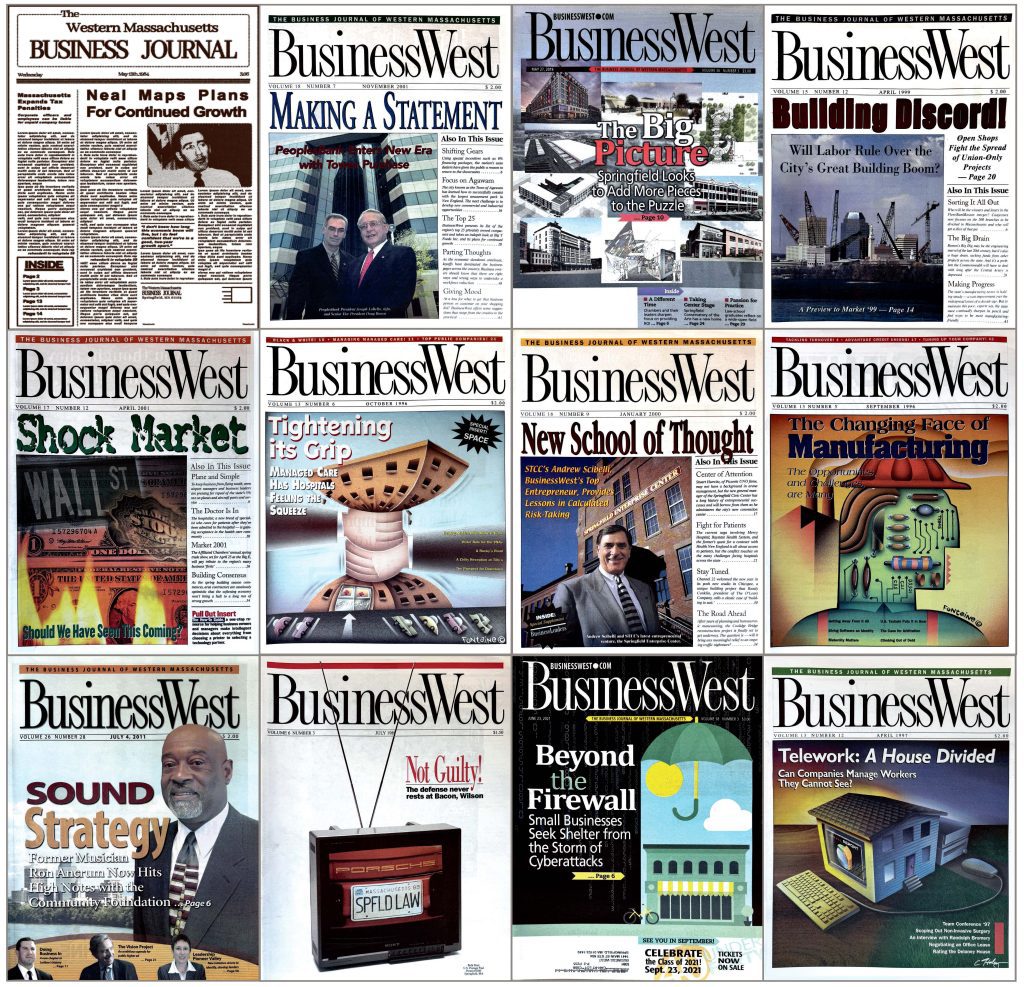
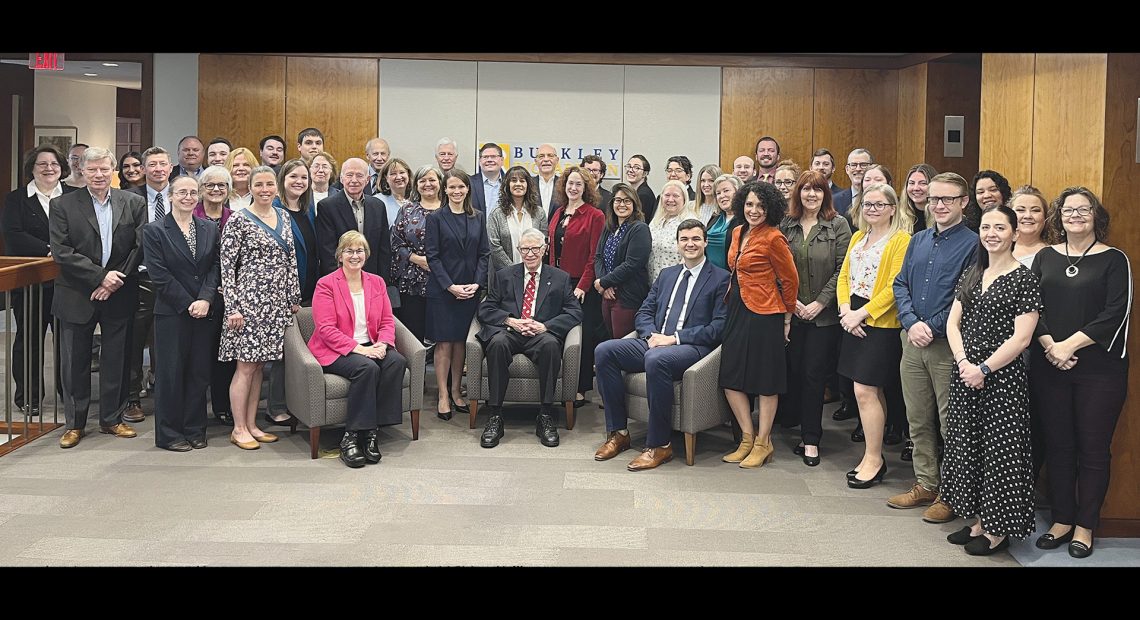

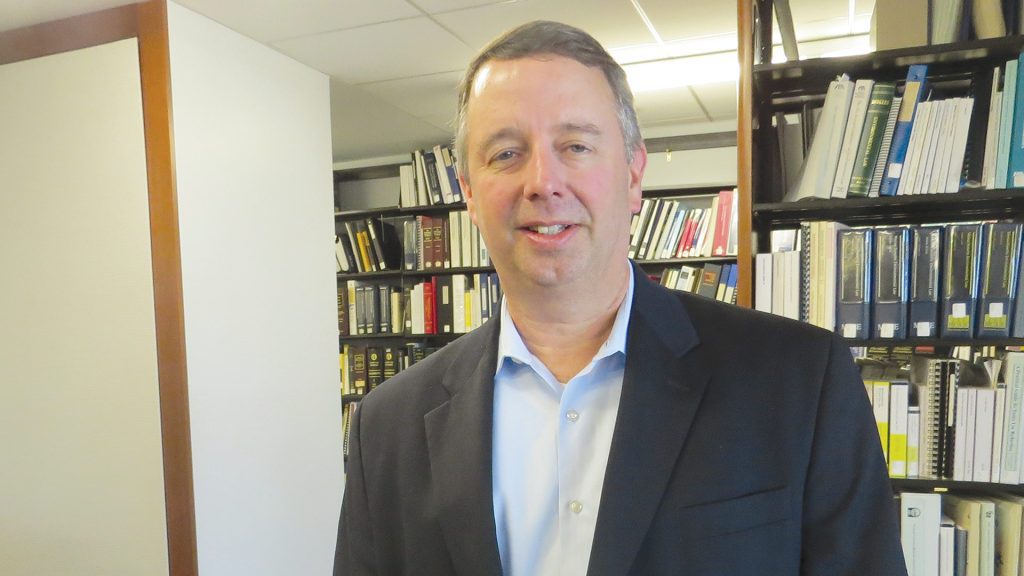
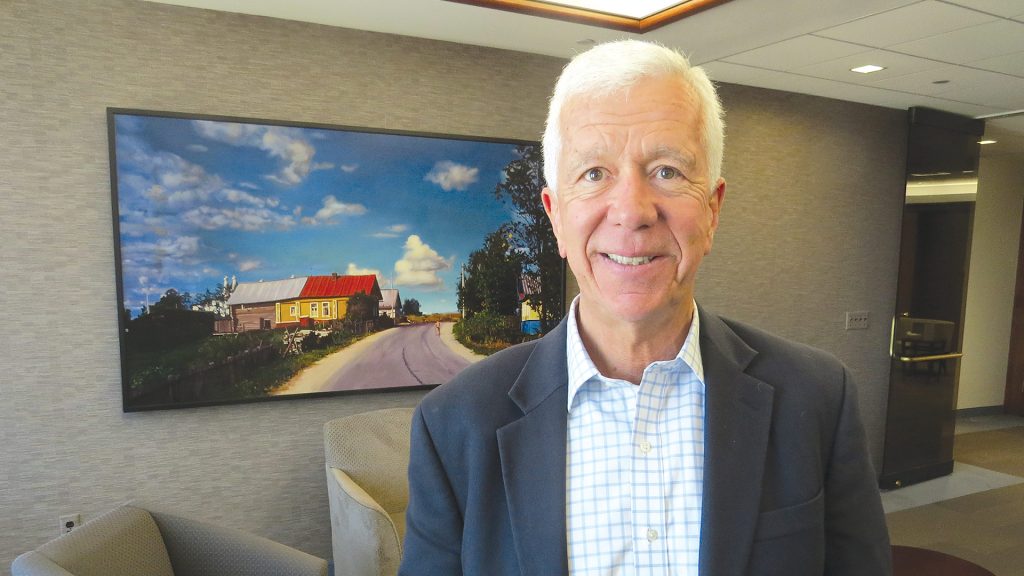
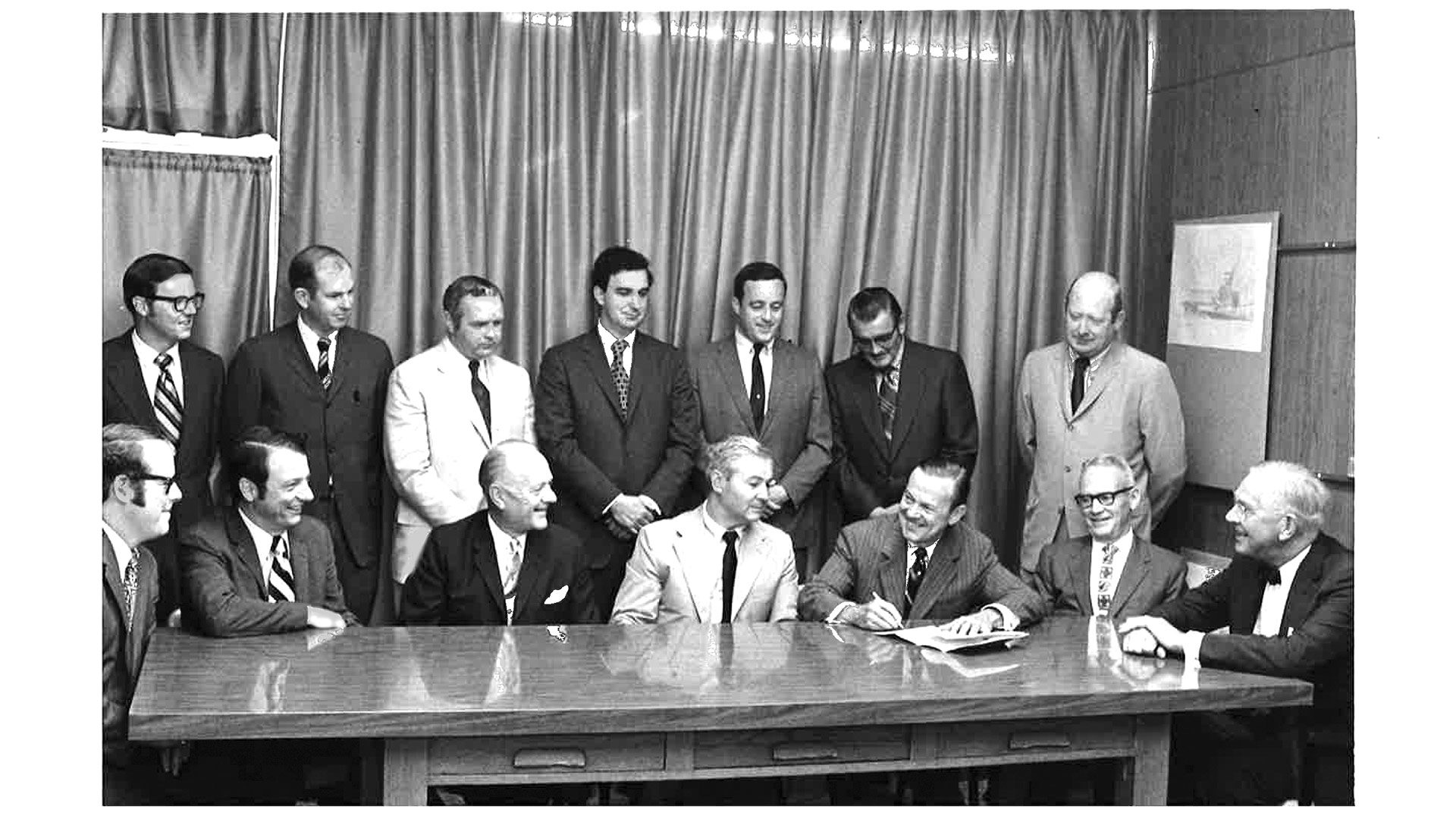

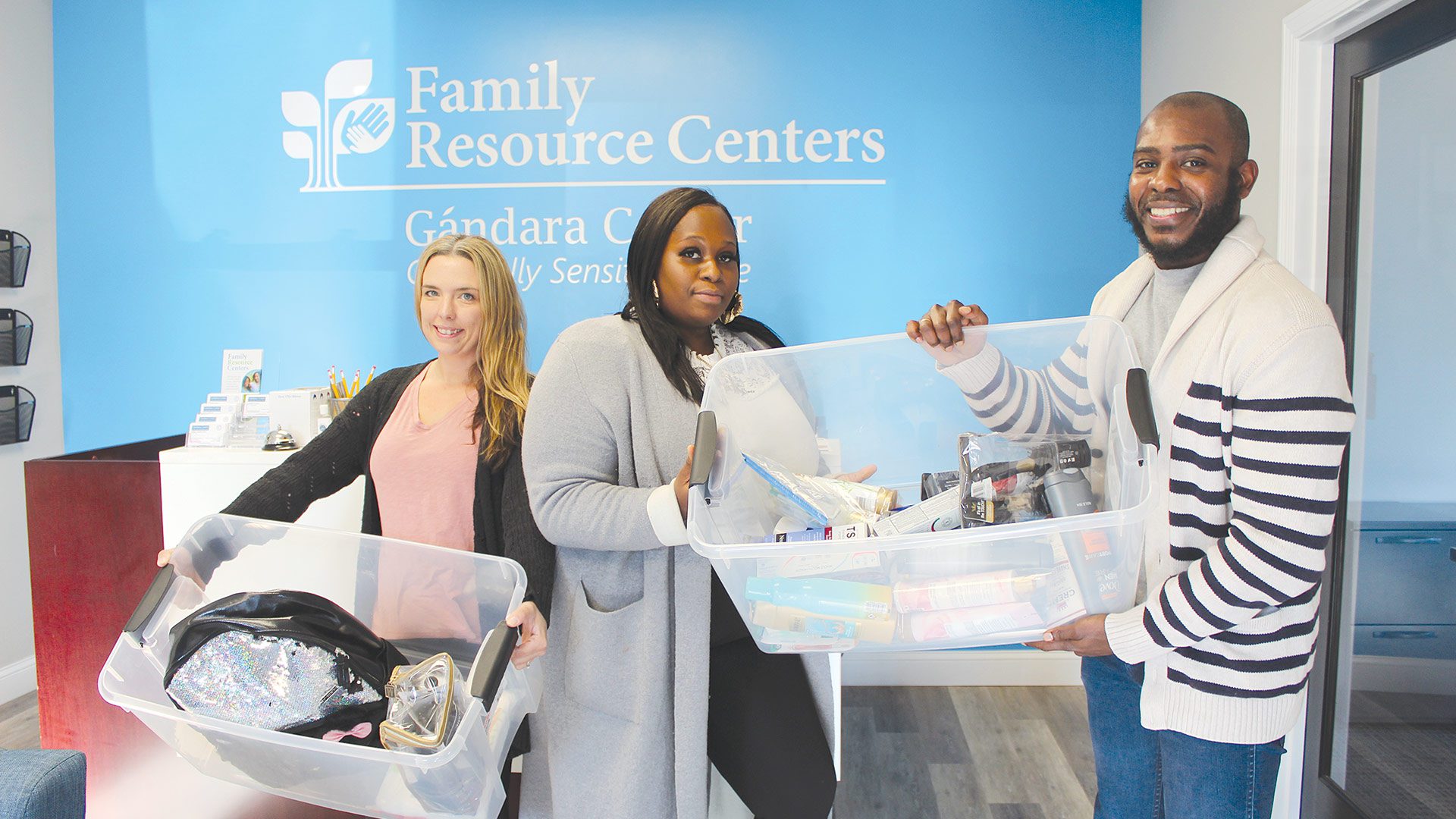

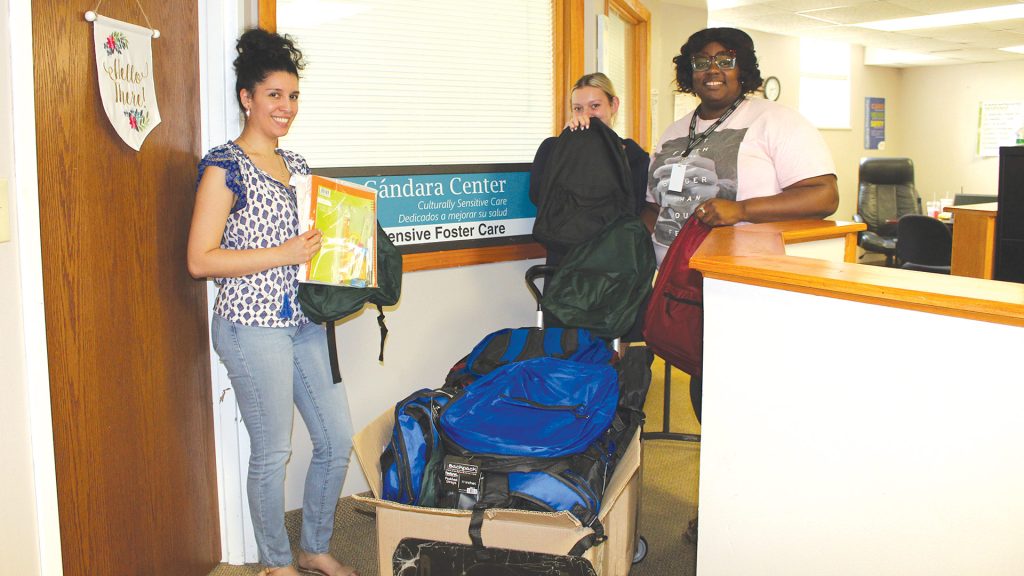
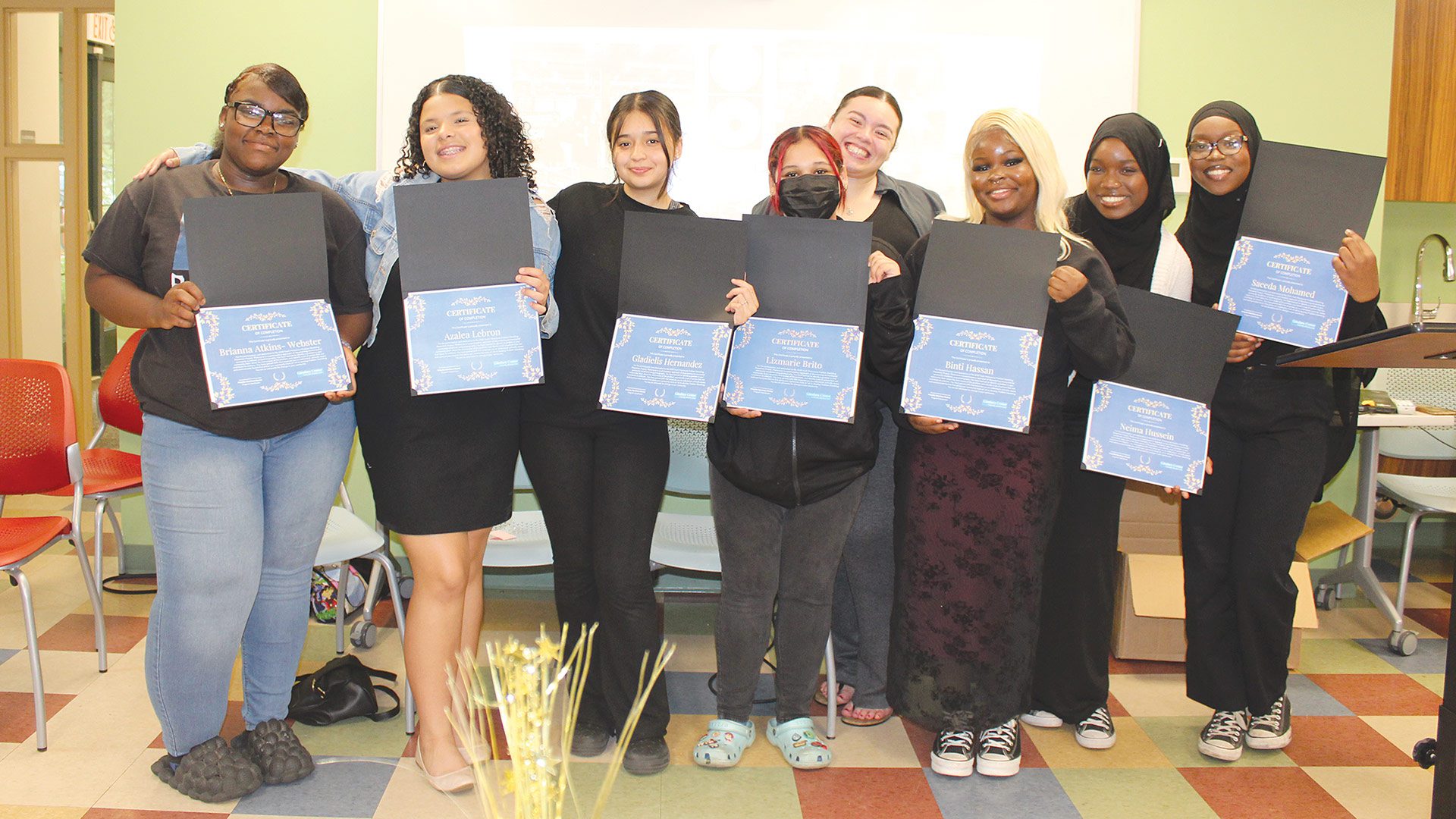



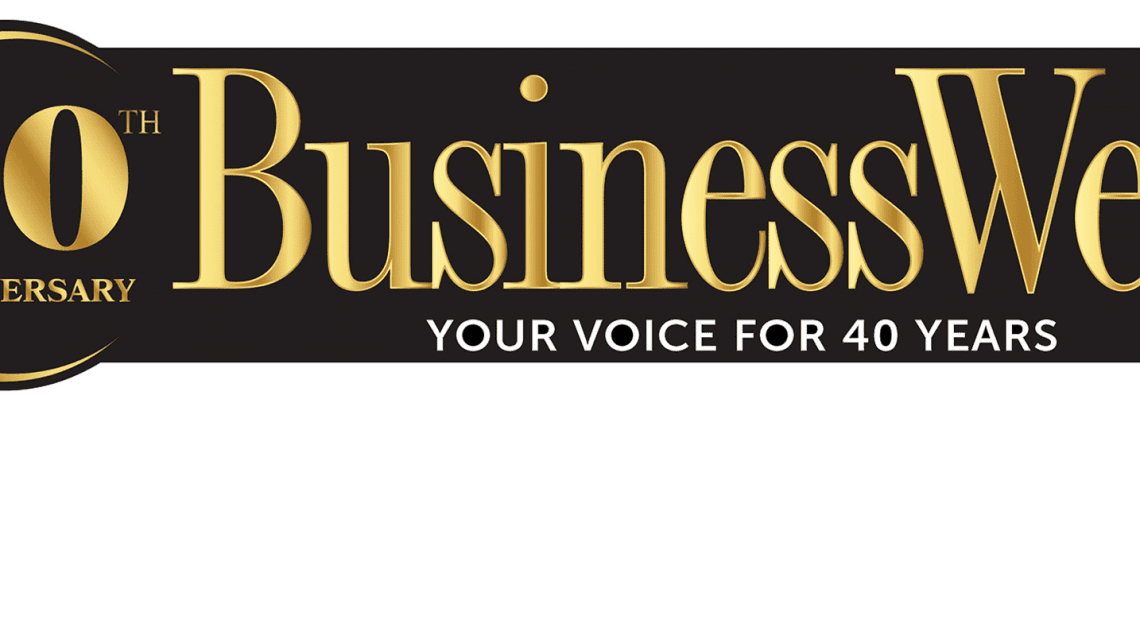
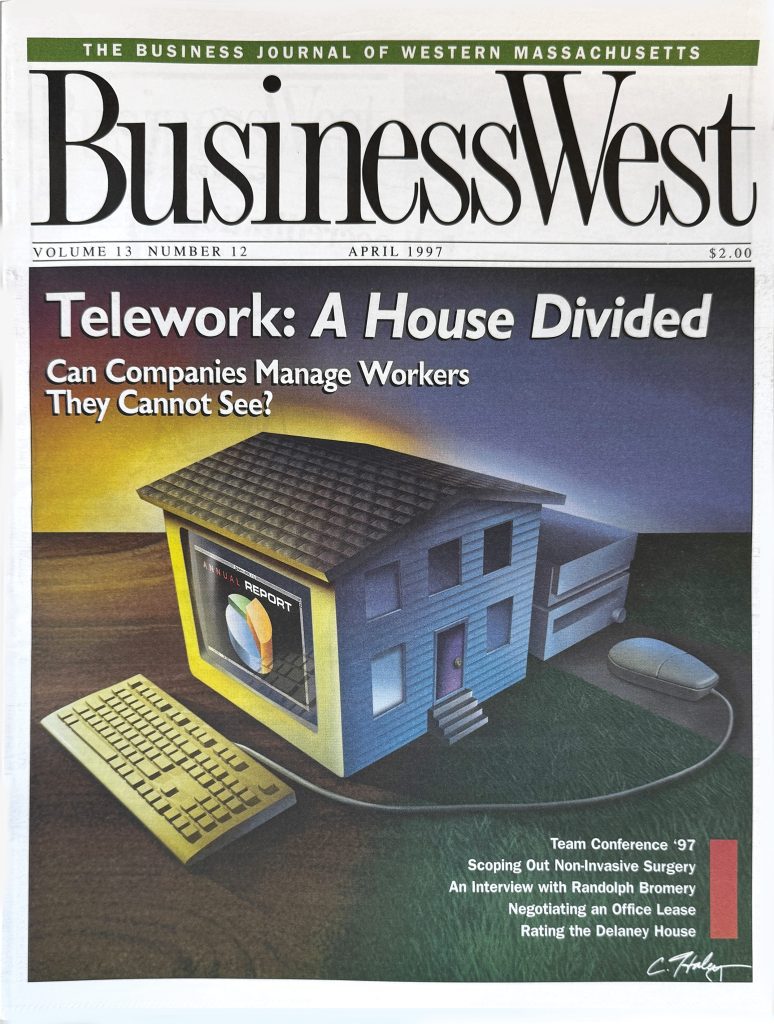 Allison Ebner recalls that, when she first entered the workplace just over 30 years ago, the overriding question still concerned what the employee could do for the employer.
Allison Ebner recalls that, when she first entered the workplace just over 30 years ago, the overriding question still concerned what the employee could do for the employer.


 On Jan. 22, 1984, a good deal of the U.S. watched — for the only time, because it never aired again — a commercial that was, in many ways, more interesting than the beatdown the Los Angeles Raiders were putting on the Washington Redskins in Super Bowl XVIII.
On Jan. 22, 1984, a good deal of the U.S. watched — for the only time, because it never aired again — a commercial that was, in many ways, more interesting than the beatdown the Los Angeles Raiders were putting on the Washington Redskins in Super Bowl XVIII.


 When Rudy D’Agostino entered the accounting profession back in 1985, there was what they called the ‘Big 8.’
When Rudy D’Agostino entered the accounting profession back in 1985, there was what they called the ‘Big 8.’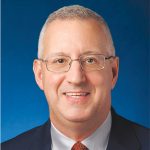



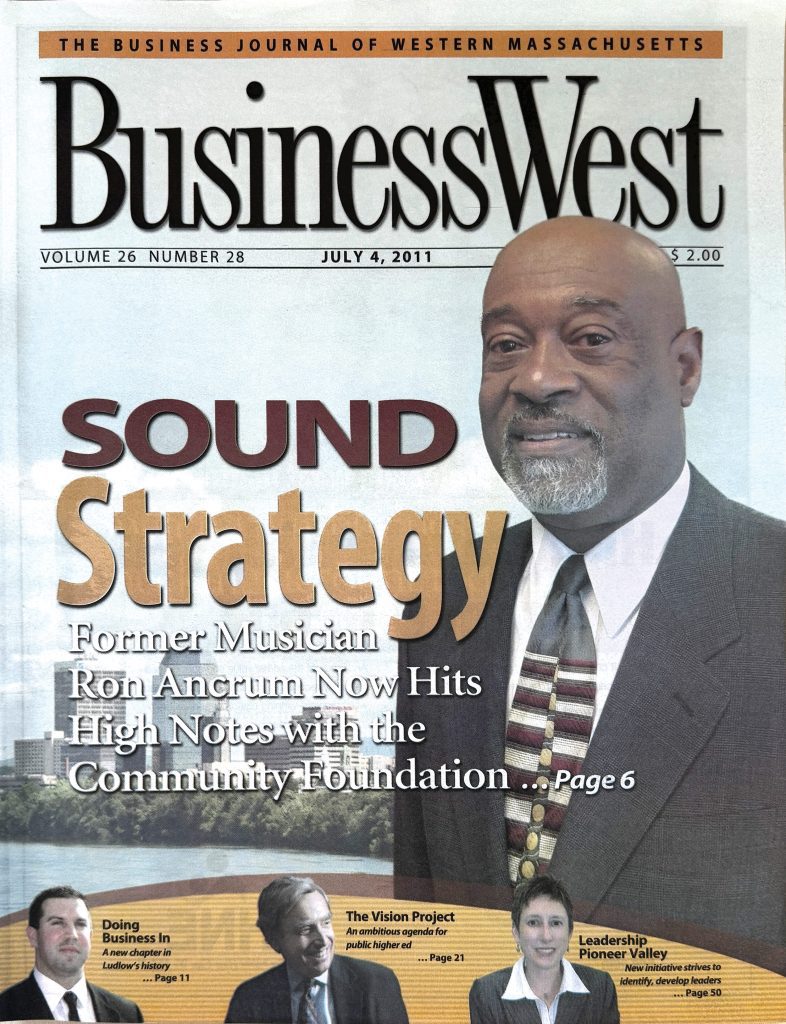 The Community Foundation of Western Massachusetts has been funding the work of charities and nonprofits across the region since 1991. And its overriding mission hasn’t changed.
The Community Foundation of Western Massachusetts has been funding the work of charities and nonprofits across the region since 1991. And its overriding mission hasn’t changed.


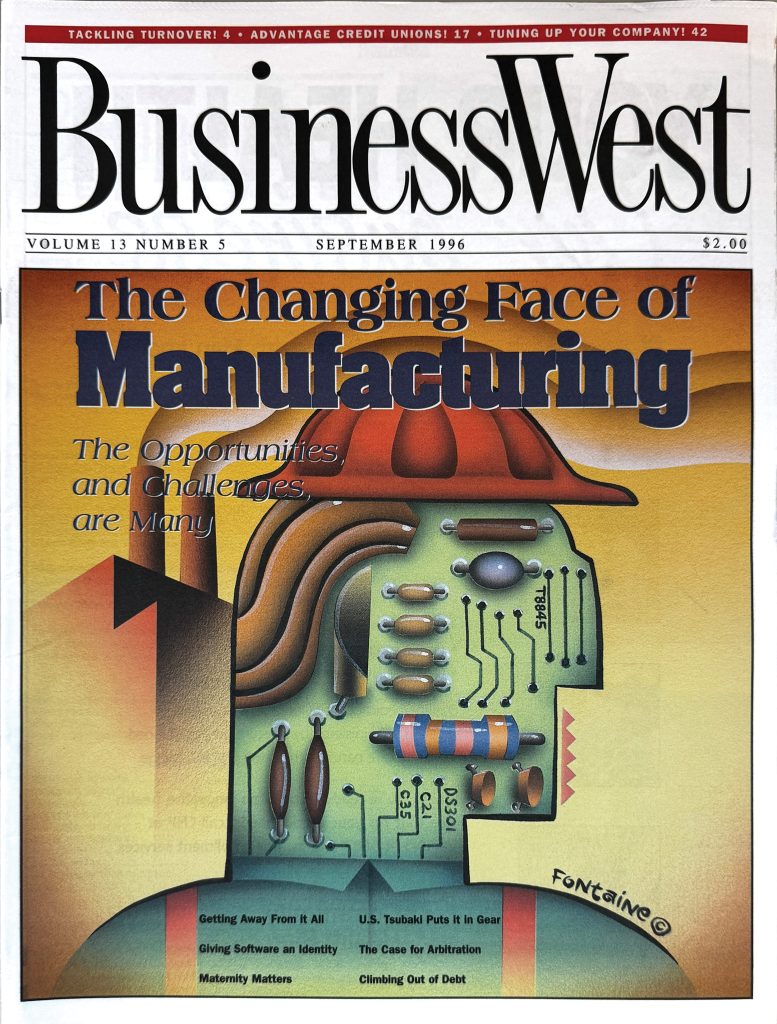 Rick Sullivan calls manufacturing the “invisible backbone” of the Western Mass. economy.
Rick Sullivan calls manufacturing the “invisible backbone” of the Western Mass. economy.
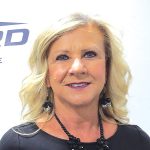

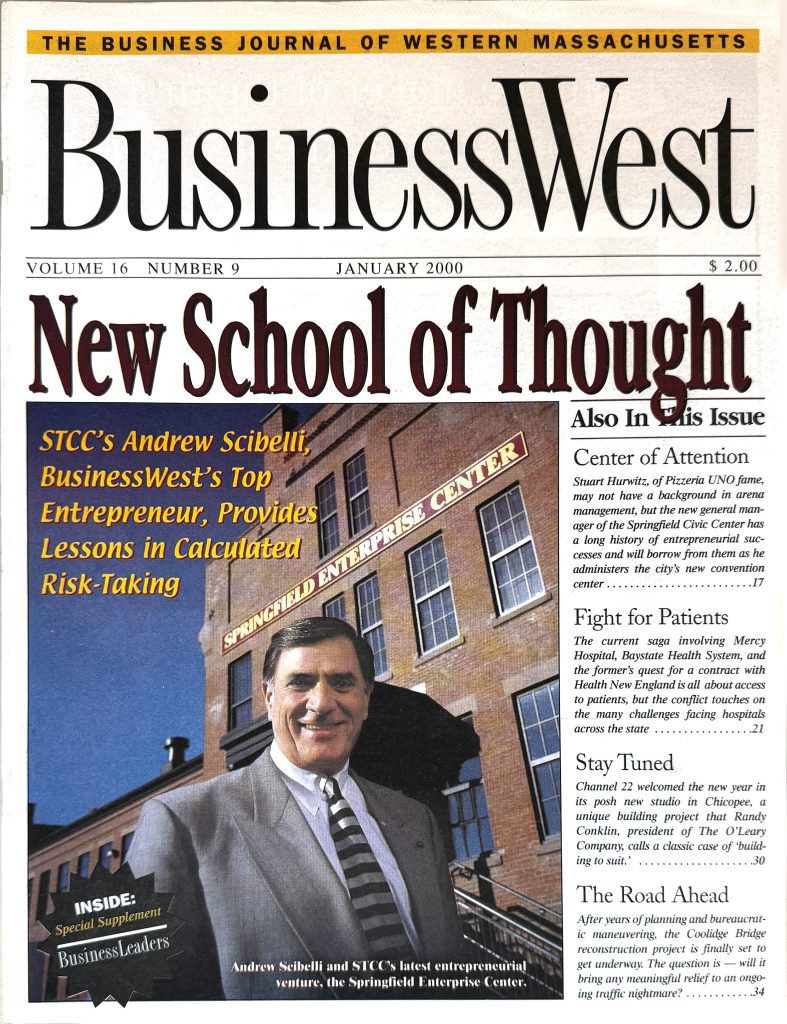 At the recent ceremony that officially installed him as chancellor of UMass Amherst, Javier Reyes noted that attitudes about higher education are changing, while rapid advancements in technology, with artificial intelligence at the center, are forcing colleges and universities to find new ways to meet their obligations.
At the recent ceremony that officially installed him as chancellor of UMass Amherst, Javier Reyes noted that attitudes about higher education are changing, while rapid advancements in technology, with artificial intelligence at the center, are forcing colleges and universities to find new ways to meet their obligations.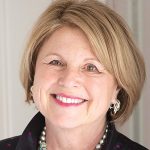



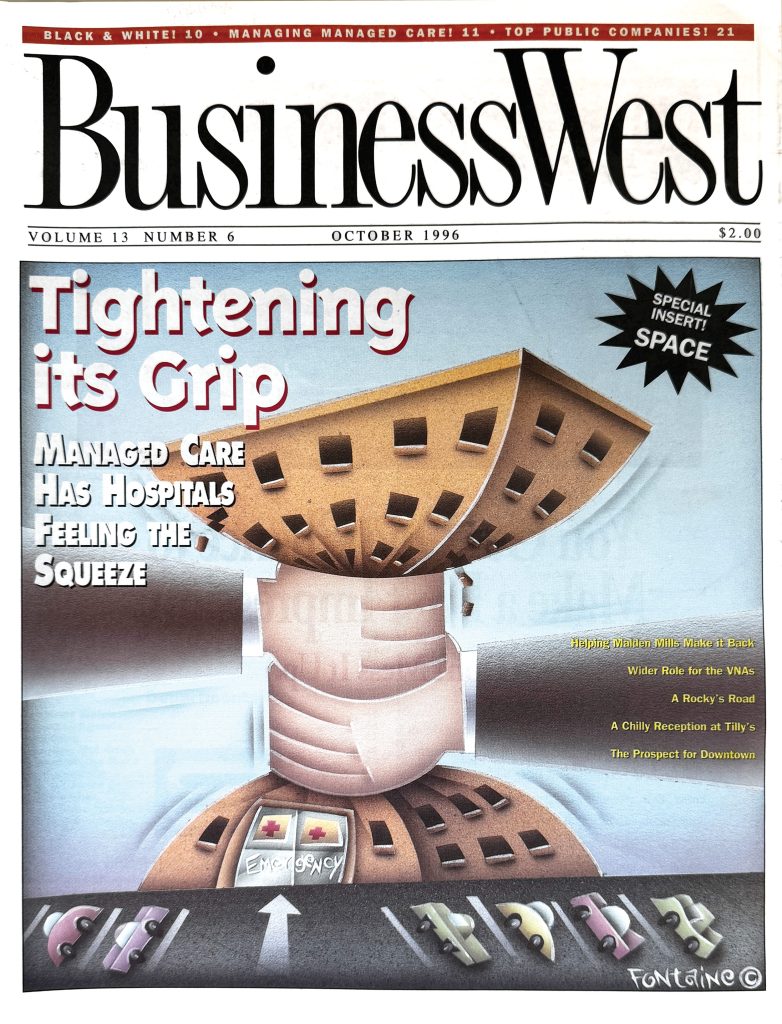 Twenty years ago, in the issue commemorating BusinessWest’s 20th anniversary, area hospital leaders talked about what had changed the most over two decades, and they all mentioned the same thing: a shortening of hospital stays, with procedures that once required a several-night stayover now requiring only one — or none at all.
Twenty years ago, in the issue commemorating BusinessWest’s 20th anniversary, area hospital leaders talked about what had changed the most over two decades, and they all mentioned the same thing: a shortening of hospital stays, with procedures that once required a several-night stayover now requiring only one — or none at all.
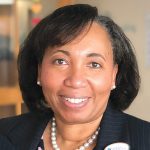

 When she first started working for Merrill Lynch in 1985, Pat Grenier had a desk, a phone, a phone book, and a street directory. And there was a lot of cold calling.
When she first started working for Merrill Lynch in 1985, Pat Grenier had a desk, a phone, a phone book, and a street directory. And there was a lot of cold calling.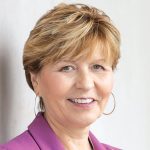



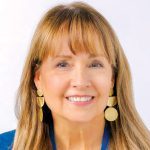
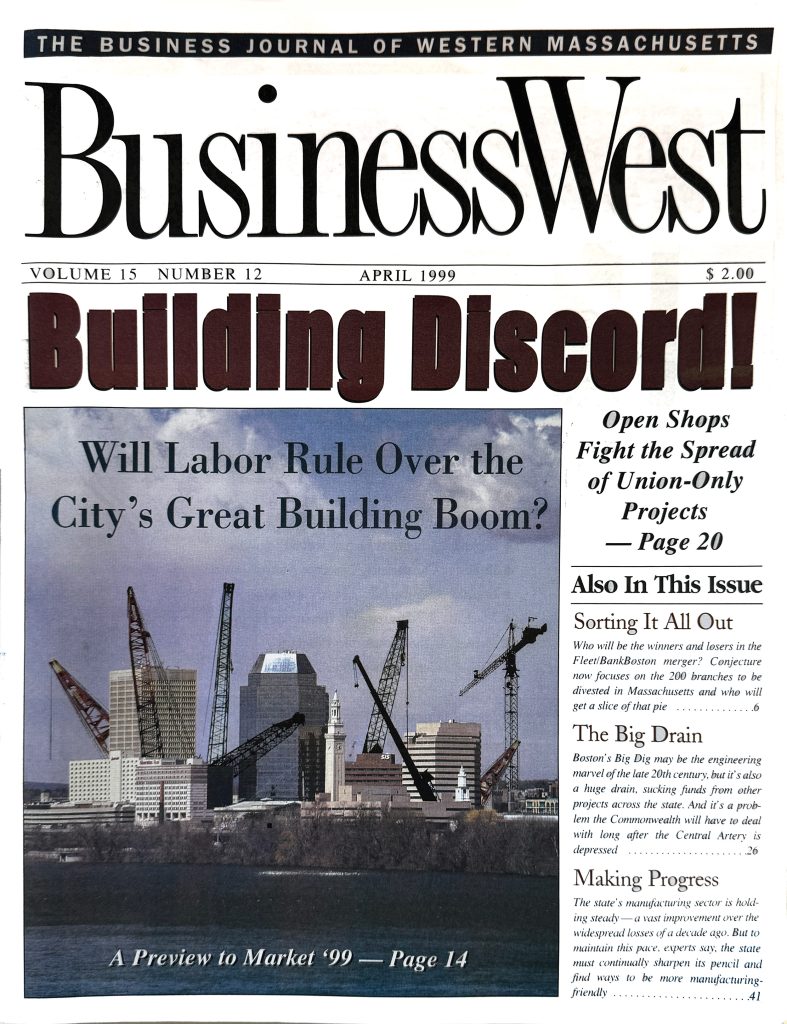 When you’ve been building things for as long as Daniel O’Connell’s Sons (DOC) has, well … sometimes you enjoy the sequel.
When you’ve been building things for as long as Daniel O’Connell’s Sons (DOC) has, well … sometimes you enjoy the sequel.

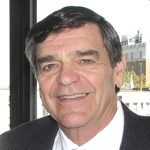
 When Jack Dill, president of Colebrook Realty Services, arrived in downtown Springfield in the mid-’70s, it was a different world and a much different city.
When Jack Dill, president of Colebrook Realty Services, arrived in downtown Springfield in the mid-’70s, it was a different world and a much different city.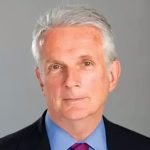

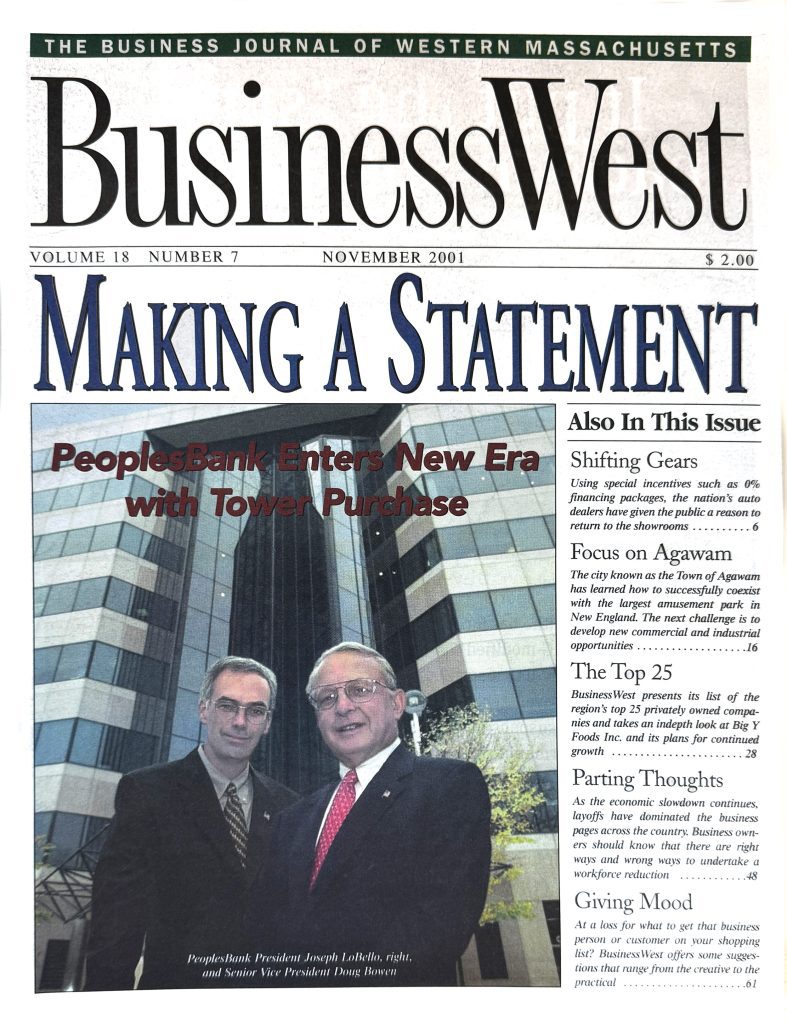 Tom Senecal used some hard numbers to detail what is perhaps the biggest change in the banking industry over the past four decades.
Tom Senecal used some hard numbers to detail what is perhaps the biggest change in the banking industry over the past four decades.




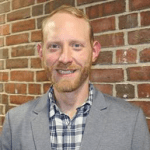

 The Western Mass. region has a strong tradition of entrepreneurship that goes back more than three centuries.
The Western Mass. region has a strong tradition of entrepreneurship that goes back more than three centuries.

